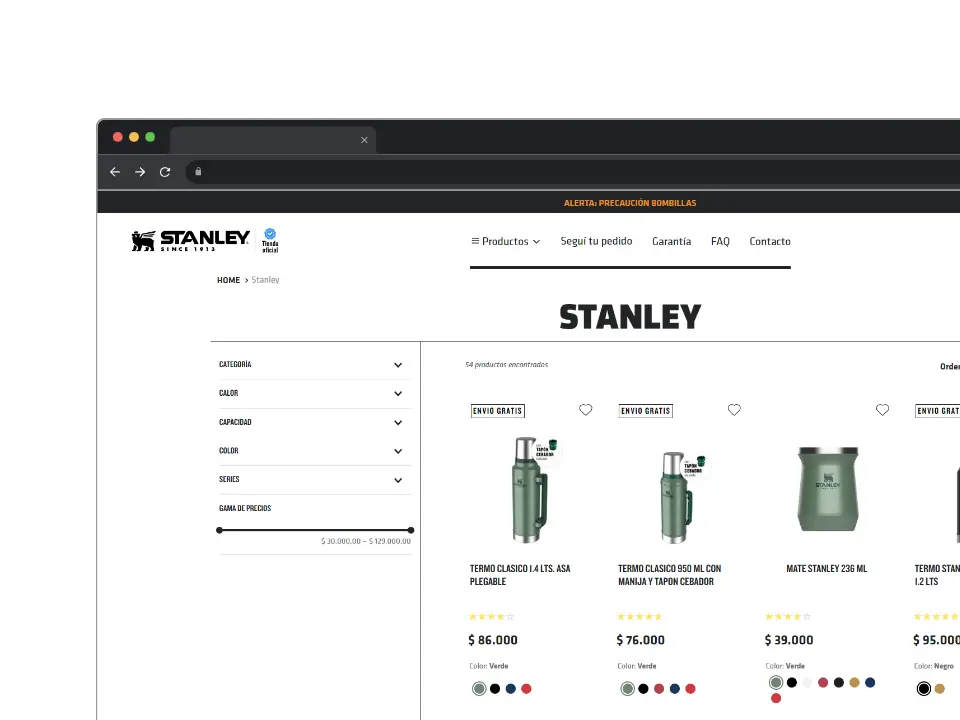A/B testing is a technique that involves comparing two versions of a web element (such as a title, an image, a button, etc.) to determine which one performs better in terms of conversion, traffic, clicks, sales, etc The objective is to optimize the design and usability of a website, as well as improve the user experience and customer satisfaction.
The advantages of applying A/B testing to web projects are multiple:
- It allows you to make decisions based on real data and not on assumptions or intuitions.
- Reduces the risk of implementing changes that may have a negative effect on results or user perceptions.
- Increases user confidence by offering them a website more adapted to their needs and preferences.
- Improves return on investment (ROI) by increasing conversions and sales.
- It facilitates innovation and creativity by allowing you to test different options and evaluate their impact.
A success story
Not long ago we were present at the CACE (Argentine Chamber of Electronic Commerce) event, where we were able to witness what the famous Stanley brand has achieved in Argentina using this testing method on its ecommerce website.
In Argentina the brand must deal with a big problem, the counterfeiting of its products, which are very popular in parallel markets. Because of this, they received an excessive number of queries about the authenticity of their merchandise and had to take action on their website to control the situation. It was inevitable that the queries would stop coming, but they decided to try to make a minimal modification to their ecommerce to reduce the volume.
It is public knowledge that today, on social networks like Twitter or Instagram, we give important symbolic value to people or brands that have the famous “check” on their accounts. In a way, these types of accounts give us “confidence”. Incredibly, with this small change in the logo, queries about authenticity dropped by 20% at Stanley’s ecommerce.


The company managed to save costs in managing or advising clients, which represented something totally positive in terms of the human resources necessary to carry out this action.
Successful A/B Testing:
So, how do we carry out A/B testing that provides us with valuable data about the use of our website? What should we consider?
To carry out effective A/B testing, it is necessary to follow a series of steps:
- Define the objective and hypothesis of the experiment. For example, “if I change the color of the purchase button from red to green, the number of purchases made will increase.”
- Identify the variables to test and create the two versions (A and B) of the web element. For example, create two purchase buttons with different colors.
- Choose the right tool to perform A/B testing. There are various online platforms that facilitate this process such as Optimizely, VWO, etc.
- Determine the sample size and duration of the experiment. It is important to take into account the level of statistical confidence and the power of the test to obtain valid and significant results.
- Launch the experiment and distribute the traffic between the two versions randomly and equally.
- Analyze the results and draw conclusions. The performance of the two versions must be compared based on the defined objective and verify if the hypothesis is confirmed or rejected.
- Implement the winning change or run new experiments if necessary.
A/B testing is a very useful tool to improve the quality and effectiveness of web projects. However, it also has some limitations and challenges that must be taken into account, such as:
- It requires time, resources, and technical knowledge to design and implement experiments correctly.
- It can cause confusion or frustration in users if they are shown inconsistent or contradictory versions of the website.
- It can negatively affect SEO positioning if the good practices recommended by Google or other search engines are not followed.
- It does not guarantee long-term success, as user behaviors and preferences can change over time or depending on context.
In conclusion, A/B testing is a methodology that allows you to optimize web projects through the empirical comparison of different alternatives.
Its advantages are obvious, but we must also be aware of its limitations and challenges. Therefore, it is important to plan the experiments well, choose the appropriate variables, use the appropriate tools and analyze the results rigorously.


